Autism In Russia
Understanding Autism in Russia: Challenges and Progress
Autism Spectrum Disorder (ASD) remains an underdiagnosed and underserved condition within Russia, where systemic, societal, and regional disparities complicate early diagnosis, treatment, and social integration. Over the past decade, a dedicated movement driven by expert organizations and government initiatives has sought to improve awareness, standards, and inclusion for autistic individuals, yet many challenges persist in establishing a coherent, nationwide support system.
Epidemiological Landscape of Autism in Russia
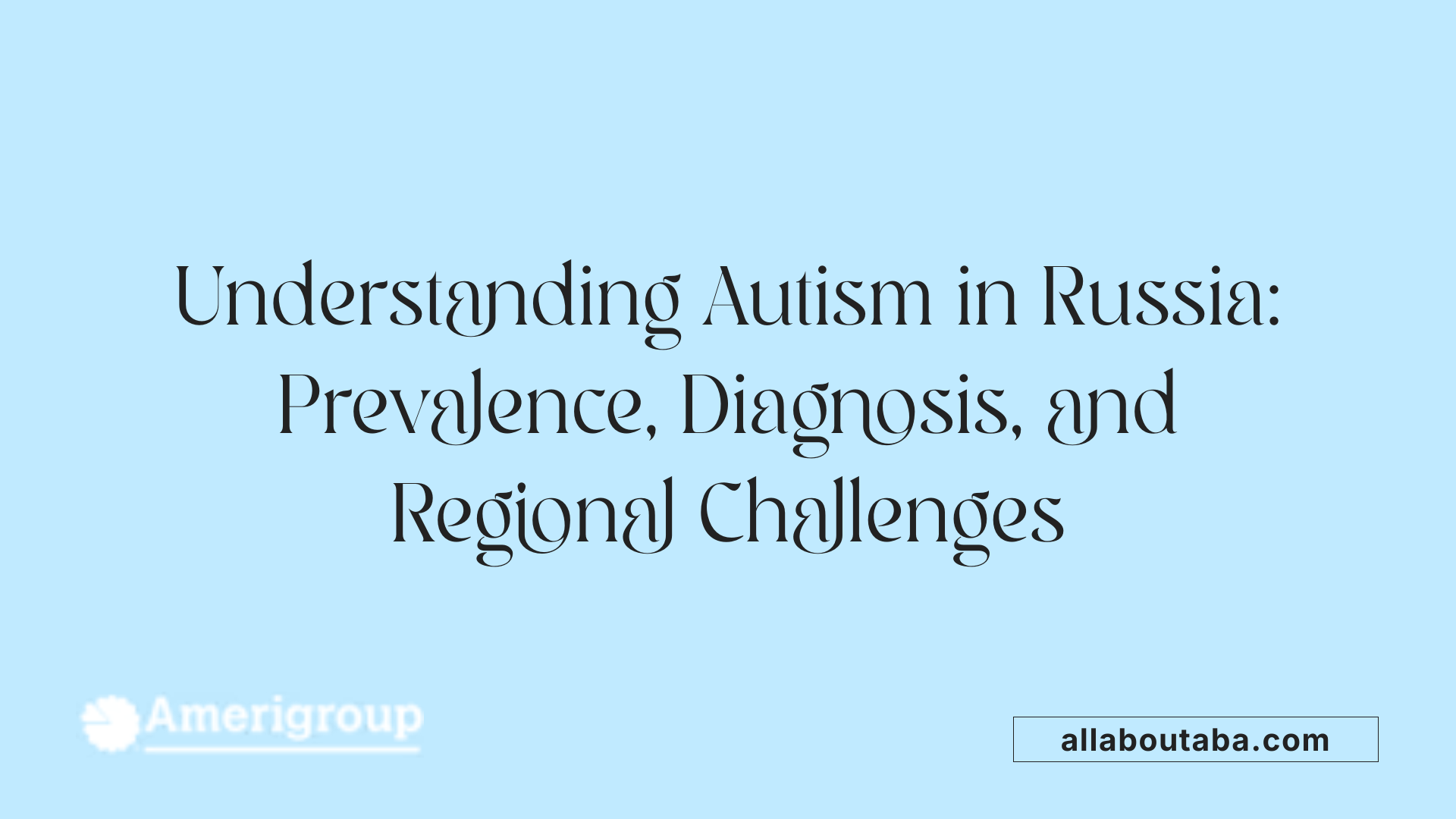
What is the autism prevalence and diagnosis situation in Russia?
In Russia, the official recognition of autism spectrum disorder (ASD) is notably lower than global estimates. As of 2021, about 28.3 individuals per 100,000 population are diagnosed and registered with ASD. This figure is roughly 40 times less than the worldwide median prevalence, highlighting a significant underdiagnosis issue.
While the number of people registered with ASD in healthcare institutions has been gradually rising—from 24.2 per 100,000 in 2000 to 28.3 in 2021—the overall landscape points to a large gap between actual cases and recorded diagnoses. This slow increase points more to enhanced awareness and better screening over time rather than a genuine surge in cases.
How do regional differences affect diagnosis rates?
Russia exhibits extraordinary variability in ASD diagnosis across different regions. Some areas report as low as 1.7 cases per 100,000, while others reach as high as 177.7 cases. Such disparities are primarily caused by differences in awareness, resource availability, and screening infrastructures.
In regions with limited professional training, autism may go unnoticed or be misdiagnosed. The absence of a standardized national screening protocol further exacerbates these gaps, making it difficult to get an accurate picture of autism prevalence countrywide.
What factors contribute to underdiagnosis in Russia?
Several interconnected obstacles hinder timely and accurate diagnosis of ASD. Firstly, a widespread lack of awareness about autism within communities and among healthcare professionals means many cases are overlooked.
Secondly, pediatric and general medical professionals often have limited involvement in screening procedures, which are crucial for early detection. Without structured, nation-wide screening programs, many children remain undiagnosed.
Thirdly, societal stigma surrounding autism can discourage families from seeking help or acknowledging diagnosis, further delaying intervention.
Lastly, the absence of a unified diagnostic system and comprehensive data collection hampers effective policy formulation and resource allocation.
Improving the diagnostic landscape
Recent institutional reforms aim to address these challenges by establishing a modern, nationwide screening and diagnosis system. These efforts include developing inclusive educational models, training healthcare providers, and raising public awareness.
They also focus on integrating autism support into educational and social systems, helping to identify more cases early and provide appropriate assistance. Nevertheless, progress is ongoing, and uniform diagnostic practices are essential for better understanding and supporting individuals with ASD across Russia.
| Aspect | Current Status | Challenges | Suggested Improvements |
|---|---|---|---|
| Prevalence estimates | 28.3 per 100,000 (2021) | Underdiagnosis, low awareness | Implement nationwide screening programs and data collection |
| Regional diagnosis rates | 1.7 to 177.7 per 100,000 | Resource disparities | Enhance training and resources in underdiagnosed regions |
| Diagnostic systems | Not unified | Fragmented diagnostic practices | Establish a standardized national framework for diagnosis |
| Public awareness | Low | Stigma, misinformation | Public campaigns and educational initiatives |
Societal Perceptions and Progress in Awareness
What are the societal perceptions and awareness levels about autism in Russia?
Public awareness about autism in Russia has been gradually improving over recent years, driven by a combination of educational campaigns, cultural events, and professional development activities. One notable effort was the 'ASD: Growing Up Together' event hosted by the Russian State Library for Young Adults, which aimed to foster social integration and raise awareness of autism. This event brought together Russian and international experts to share knowledge and promote acceptance.
Additionally, campaigns held during the All-Russian Inclusive Festival, along with regional initiatives such as those in Tambov, focus on informing the public about early signs of autism and ways to support individuals with ASD. These activities aim to change societal perceptions, encouraging a more inclusive outlook for people with autism.
Despite these positive steps, challenges persist. Many Russian medical professionals recognize the increasing diagnosis rates of ASD and the critical need for early detection. However, awareness gaps remain, especially regarding the importance of early screening and intervention.
Efforts are also directed toward reducing stigma and misconceptions about autism. As society becomes more familiar with neurodiversity, attitudes are gradually shifting from viewing autism solely as a pathology to understanding it as a different way of neurodevelopment.
Media and community engagement continue to play vital roles in this process. Campaigns, educational programs, and inclusive community events foster dialogue and understanding, helping to normalize autism within Russian society.
How are public awareness initiatives shaping perceptions?
Awareness campaigns and community activities are crucial for improving perceptions about autism in Russia. These initiatives aim to dispel myths, reduce stigma, and promote acceptance of neurodiverse individuals. As a result, families with children on the spectrum feel more supported, and professionals are better equipped to diagnose and assist.
The evolving role of media and community engagement
The media’s growing role in highlighting stories of individuals with autism, sharing research findings, and promoting inclusive narratives contributes significantly to changing societal perceptions. Involvement from community groups and NGOs ensures a grassroots approach to spreading awareness and fostering inclusive practices.
| Initiative | Focus | Impact | Examples |
|---|---|---|---|
| ‘ASD: Growing Up Together’ | Social integration | Increased awareness among youth and families | Hosted in the Russian State Library for Young Adults |
| All-Russian Inclusive Festival | Public education | National reach and regional impact | Awareness campaigns, workshops |
| Regional Activities | Local-level understanding | Community support and local policies | Events in Tambov and other regions |
Overall, the ongoing efforts in public education, media engagement, and community involvement are gradually transforming societal perceptions about autism in Russia, fostering a more inclusive environment and better support systems for individuals with ASD.
Autism Research, Medical Standards, and Treatment in Russia
What research, medical standards, and treatment practices related to autism are established in Russia?
Russia has made some strides towards formalizing autism-related healthcare practices. Since 2019, routine pediatric examinations have included screening for developmental disorders, which is a step forward in early detection efforts. These screenings aim to identify children who may have autism as early as possible.
Despite these initiatives, the data shows a significant gap between Russia's diagnosis rates and the global median prevalence of ASD. Official statistics from 2020–2021 reveal that about 41,307 individuals with ASD were under healthcare follow-up, which remains far below what global estimates suggest. This discrepancy points to widespread underdiagnosis, possibly due to limited awareness among healthcare professionals, social stigma, and regional disparities.
Efforts to develop treatment and support standards are ongoing. Starting in 2017, a framework for comprehensive ASD assistance was introduced in some regions, such as Khanty-Mansi Autonomous Okrug. These programs incorporate new educational models and inclusive practices not previously available in Russia.
However, the availability of specialized autism services varies greatly across regions. While service quality and access tend to be better in the capital and larger cities, many areas still face shortages of trained professionals and resources.
The challenge also includes establishing uniform standards for autism research, diagnostics, and treatment protocols nationwide. Efforts at improving interdepartmental cooperation and infrastructure are still developing.
In summary, Russia’s current landscape reflects a willingness to improve autism healthcare but faces hurdles like regional disparities, social stigma, and inconsistent service quality. Continued work is needed to enhance screening accuracy, expand specialized services, and develop unified treatment standards across the country.
| Aspect | Status | Challenges |
|---|---|---|
| Screening and Diagnostic Practices | Introduced developmental disorder screening in pediatric checkups (2019) | Inconsistent implementation across regions, underdiagnosis |
| Treatment Development | Frameworks implemented in some regions, educational models introduced | Uneven access, quality variation, lack of nationwide standards |
| Healthcare Challenges | Regional disparities, social stigma, limited awareness | Need for infrastructure, professional training, and integrated policies |
Such initiatives demonstrate Russia’s commitment to addressing autism but reveal significant gaps that hinder comprehensive care for all individuals affected by ASD.
Support Systems and Educational Initiatives for Autistic Individuals
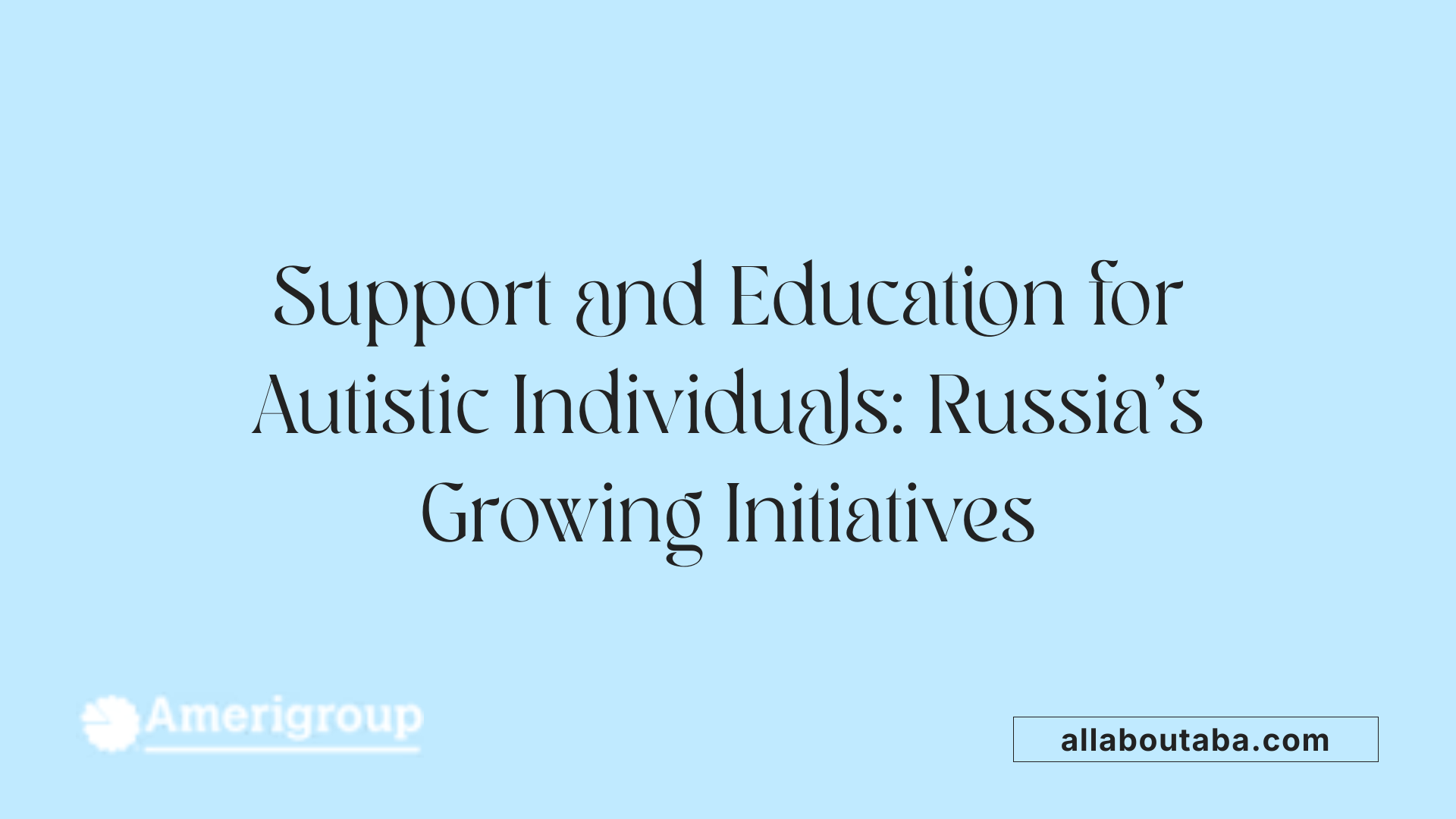
What support programs, resources, and educational initiatives are available for autistic individuals and their families in Russia?
Russia has developed a comprehensive network of support systems and educational initiatives aimed at improving the lives of individuals with autism and their families. Central to these efforts are organizations like the Federal Resource Center for Autism and various regional resource centers. These entities are responsible for creating and implementing inter-agency plans that coordinate efforts across healthcare, education, and social services.
Support programs cover a broad spectrum of needs, from diagnosis and early intervention to lifelong social inclusion. Diagnostic services are available through healthcare institutions, supported by training programs for professionals such as pediatricians, psychologists, and educators. These practitioners receive specialized training to better understand autism and its comorbidities, enhancing early detection and intervention.
In terms of education, inclusive models have been pioneered in Russia, including inclusive preschool classes, mainstream schools, and vocational training programs tailored for autistic students. These models aim to foster social integration and provide access to quality education within mainstream settings whenever possible. They are often implemented in collaboration with government educational authorities, ensuring that policies support inclusive practices.
Beyond formal education, numerous social and community programs facilitate the inclusion of autistic individuals into society. Many organizations, including the International Institute of Autism and the Way Out Foundation, conduct advocacy work, research, and social integration activities.
Resources are also directed toward supporting families. This includes providing information, counseling, and training courses to help parents understand autism, navigate the healthcare and educational systems, and find appropriate resources. Diagnostic and training courses are frequently organized for both families and professionals, raising awareness and building skills.
Legislative efforts bolster these programs by establishing policies that promote social support and educational rights for people with ASD. Over 800 laws and regulations at federal and regional levels have been influenced or enacted to improve access to services, protect rights, and promote inclusive practices.
Overall, Russia’s support framework for autistic individuals integrates diagnosis, education, social support, and policy development, striving to promote independence, social participation, and quality of life. Despite progress, ongoing challenges include regional disparities and the need for a unified early diagnostic system to ensure timely intervention.
Overview of Autism Support Initiatives in Russia
| Aspect | Description | Organization/Authority | Area of Focus |
|---|---|---|---|
| Diagnostic Services | Training for healthcare professionals, early screening programs | Federal Resource Center, Regional Centers | Early detection, professional training |
| Inclusive Education | Preschool classes, mainstream schools, vocational training | Ministry of Education, local authorities | Education equality, social integration |
| Family Support | Counseling, parental training, informational resources | NGOs, government agencies | Family empowerment, awareness |
| Advocacy & Research | Legislation support, awareness campaigns, social research | International Institute of Autism, Way Out Foundation | Social acceptance, policy change |
| Social Programs | Community integration, social skills activities | Local NGOs, civil society | Social participation, community support |
This multi-sector approach illustrates Russia’s dedication to building an inclusive environment. Still, consistent regional implementation and a unified early diagnosis system remain areas for development.
Ongoing research and policy advancements continue to shape Russia’s landscape for supporting individuals with autism. As awareness grows and practices evolve, the future holds promise for more effective and accessible services nationwide.
Government Policies, Systemic Challenges, and Opportunities
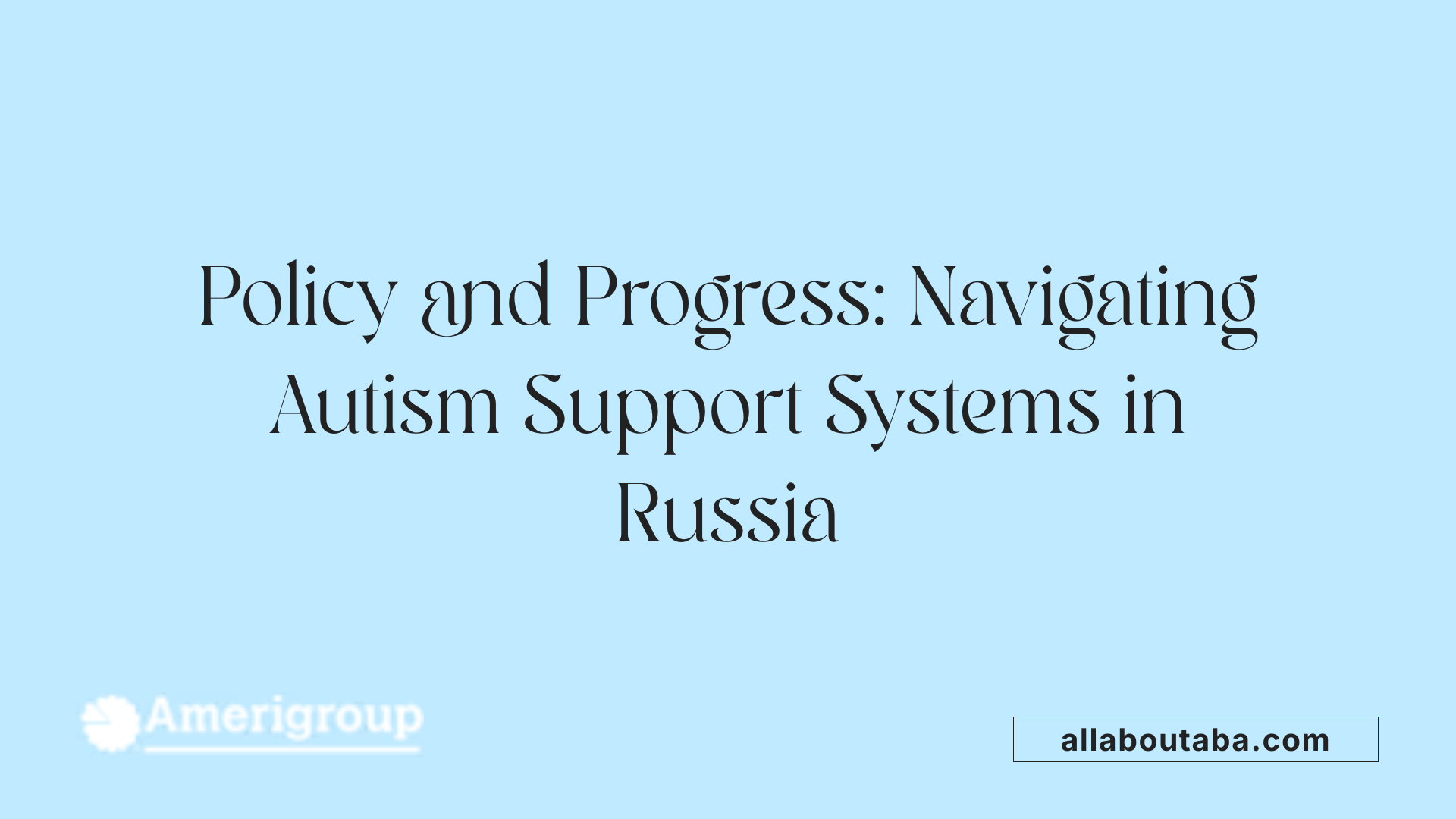
What government policies, proposals, and systemic challenges exist regarding autism in Russia?
In recent years, Russia has been actively developing policies and initiatives aimed at improving support for individuals with autism and their families. The government recognizes autism as an important social and healthcare issue, leading to efforts to enhance early detection, intervention, and research. These initiatives involve collaboration between healthcare, education, and civil society sectors.
One of the main policy focuses has been integrating autism screening into routine medical check-ups across all regions, aiming for early diagnosis and timely support. This approach seeks to address regional disparities where diagnosis rates vary significantly, from as low as 1.7 to as high as 177.7 cases per 100,000 population.
Despite these efforts, systemic challenges exist. Infrastructure limitations and uneven resource distribution across regions hinder comprehensive implementation of autism services. Additionally, low levels of awareness among medical professionals and the general public, coupled with persistent stigma around autism, contribute to underdiagnosis and delayed interventions.
Since 2014, the prevalence of diagnosed ASD cases in Russia has been steadily rising, indicating improved detection and greater awareness. Over 41,000 individuals were registered with autism in healthcare records in 2021—a figure that continues to grow. This trend underscores the importance of ongoing policy development and capacity building.
The Russian government and various research institutions are actively working to expand the knowledge base about autism, promoting research, training for professionals, and new inclusive practices in schools. These include the use of inclusive educational models and resource zones, which are being introduced in Russian classrooms for the first time.
However, the absence of a unified national system for early diagnostics remains a significant obstacle. Without standardized screening protocols and comprehensive funding, many children and adults with autism may remain undiagnosed or inadequately supported.
To improve this situation, ongoing policy proposals aim to bolster screening capacity, raise levels of awareness, and foster inclusion through legislative measures. Over 800 laws and regulations related to autism and social support have been influenced at both federal and regional levels, demonstrating a commitment to systemic change.
In conclusion, while progress has been made, substantial systemic barriers need to be addressed to ensure equitable access to diagnosis, support, and intervention services for all regions in Russia. Strengthening infrastructure, expanding training programs, and reducing societal stigma are crucial steps toward building a more inclusive society for people with autism.
Social Issues and Social Inclusion of Autistic People
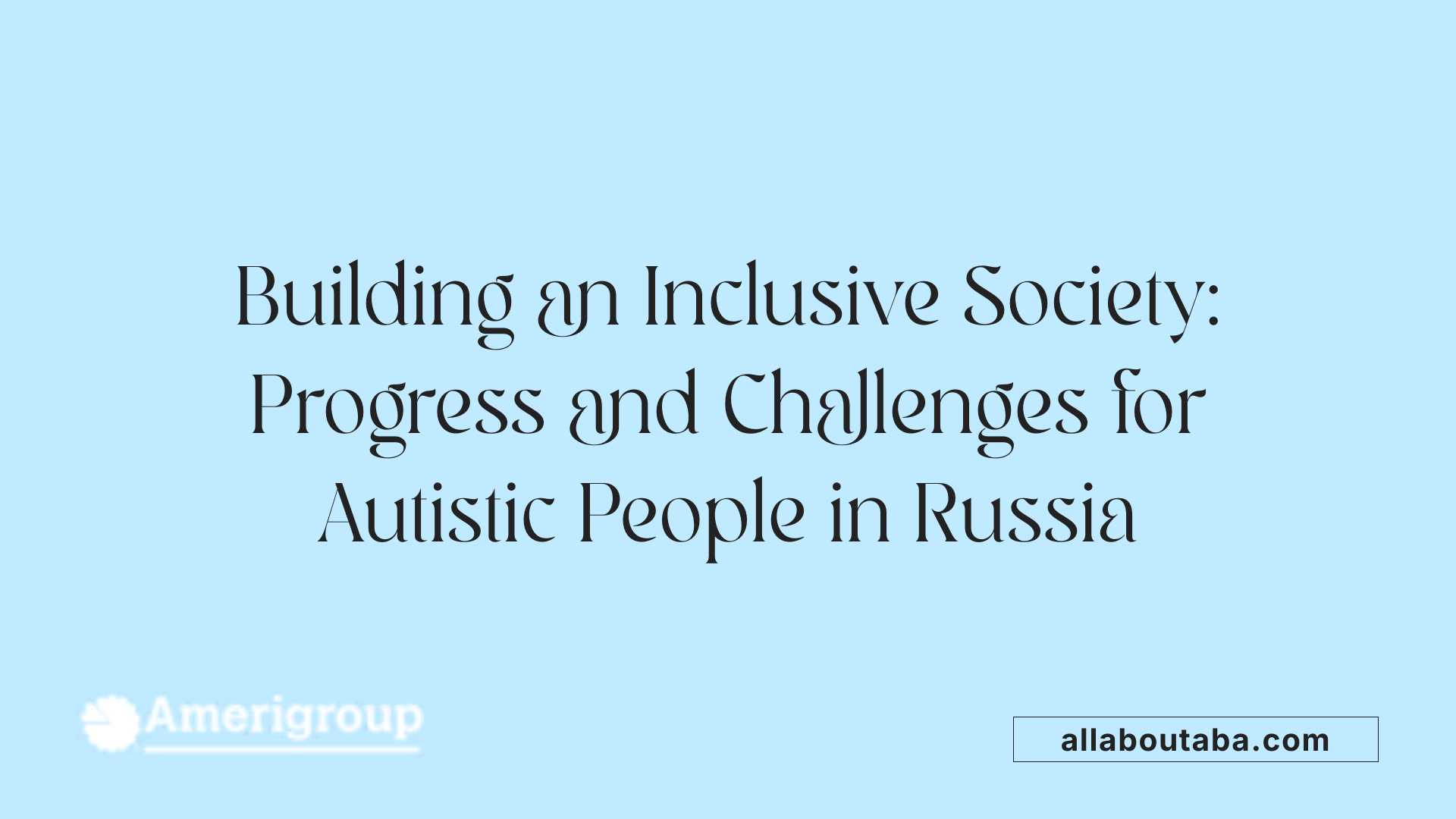
What social issues, such as ableism, institutionalization, and social integration, affect autistic individuals in Russia?
Autistic individuals in Russia face a complex landscape of social challenges that hinder their inclusion and development. One of the most pressing issues is ableism, which manifests as societal stereotypes and misconceptions about autism. Many Russians still hold outdated beliefs, such as equating autism with severe mental illnesses like schizophrenia, which fosters discrimination and social exclusion.
Regional disparities significantly impact access to diagnosis and support services. In rural and underserved regions, such as certain parts of the North Caucasus, the lack of specialized resources means many autistic children remain undiagnosed or diagnosed late. This delay hampers early intervention efforts, which are crucial for improving quality of life.
Institutionalization versus community living is another critical concern. Historically, there has been a tendency to isolate autistic individuals in specialized institutions rather than promoting inclusive, community-based environments. Although reform efforts aim to shift towards community integration, progress remains slow, and institutional care still predominates in many areas.
Social integration in employment and education remains minimal. Most autistic children and adults do not have access to inclusive educational settings or workplaces. Parents often hesitate to mainstream their children into mainstream schools due to fears of harassment, discrimination, and lack of adequate support, which perpetuates social segregation.
The societal attitudes towards autism are deeply ingrained with stigma and prejudice. This societal neglect is compounded by societal stereotypes that classify autism as a form of deficiency rather than neurodiversity. Such perceptions hinder efforts towards acceptance and equal opportunities.
Furthermore, the absence of a unified national system for early screening and diagnosis exacerbates these social issues, delaying intervention and reducing chances for social participation. The lack of awareness and professional training in recognizing ASD leads to missed opportunities for early support, especially outside well-developed urban centers.
In summary, autistic individuals in Russia encounter multifaceted barriers rooted in societal attitudes, structural inadequacies, and regional inequalities. These factors collectively contribute to the marginalization of autistic people and hinder their full inclusion in society.
| Issue | Description | Impact on Autism |
|---|---|---|
| Ableism | Stereotypes and misconceptions about autism | Discrimination, social exclusion |
| Regional Disparities | Unequal access to diagnosis and services | Late diagnosis, underdiagnosis |
| Institutionalization | Preference for isolating care rather than community-based living | Reduced independence, social isolation |
| Educational Opportunities | Lack of inclusive education and mainstreaming options | Limited social interaction, skill development |
| Employment Opportunities | Scarcity of workplace accommodations for autistic adults | Unemployment, social marginalization |
The ongoing reform and advocacy work aim to address these issues. Increased awareness, inclusive educational models, and community-based support structures are vital steps toward fostering social acceptance and participation for autistic individuals in Russia.
Regional Disparities and Efforts Toward National Integration
Are there regional differences in autism diagnosis and services within Russia?
Yes, there are notable differences across Russia when it comes to autism diagnosis and support services. Data from recent studies show that diagnosis rates range dramatically, from as low as 1.7 per 100,000 people in some regions to as high as 177.7 per 100,000 in others. This wide spread indicates that many individuals with autism, especially outside major cities, may go undiagnosed or receive limited support.
These regional gaps are primarily due to several factors. Limited awareness among healthcare professionals results in fewer screenings and assessments in less developed areas. Cultural stigma surrounding autism can also discourage families from seeking help. Additionally, many regions lack the infrastructure needed for early diagnosis, inclusive education, and ongoing support, which are more readily available in Moscow and Saint Petersburg.
As a consequence, children and adults in non-capital regions often experience significant barriers to accessing quality diagnostics and social services. This situation impacts early intervention efforts and the overall well-being of individuals with autism and their families.
To visualize these disparities, the following table summarizes the variation in diagnosis rates across different Russian regions:
| Region | Diagnosis Rate (per 100,000) | Contributing Factors |
|---|---|---|
| Moscow | 177.7 | High awareness, extensive support infrastructure |
| Saint Petersburg | 120.5 | Developed healthcare and educational services |
| Siberia | 5.4 | Limited screening, cultural stigma |
| Far East | 1.7 | Underdeveloped healthcare systems, low awareness |
The overall diagnosis rate for Russia is approximately 40 times lower than the global median, highlighting a substantial underdiagnosis issue. This discrepancy underscores the urgent need to implement uniform diagnosis and support protocols nationwide.
Regional initiatives and strategies for nationwide equalization
Recognizing these challenges, several institutional and civil society efforts have begun to address regional disparities. The main strategies include:
- Development of inclusive educational models: For the first time in Russia, inclusive models are being integrated into the education system, which helps identify and support children with ASD regardless of their location.
- Training programs for professionals: Extensive educational efforts are directed at doctors and educators across regions to improve understanding and screening procedures. These programs aim to increase early diagnosis rates and reduce delays.
- Advocacy and policy influence: Over the past decade, the organization leading these efforts has influenced more than 800 laws and regulations to support inclusive education and social integration.
- Creation of resource zones and inclusion models: Pilot projects in Russian schools incorporate inclusive practices and specialized resource zones, promoting early intervention regardless of regional disparities.
- International collaboration and conferences: Annual events like the 'Autism. Challenges and Solutions' conference facilitate knowledge exchange and promote best practices across regions.
Moving towards more equalized services
Efforts to bridge the gap involve expanding screening programs, raising public awareness, and fostering cooperation between government agencies, NGOs, and educational institutions. These initiatives aim to build a unified system for early diagnosis, intervention, and support services. The goal is to ensure that every individual with ASD in Russia, no matter where they live, benefits from comprehensive and timely assistance.
By addressing regional differences directly and promoting nationwide strategies, Russia takes steps toward creating a more equitable environment for people with autism and their families. The ongoing reforms and initiatives provide hope for better diagnosis, support, and inclusion across the country.
Collaborative Efforts and the Future of Autism Support in Russia
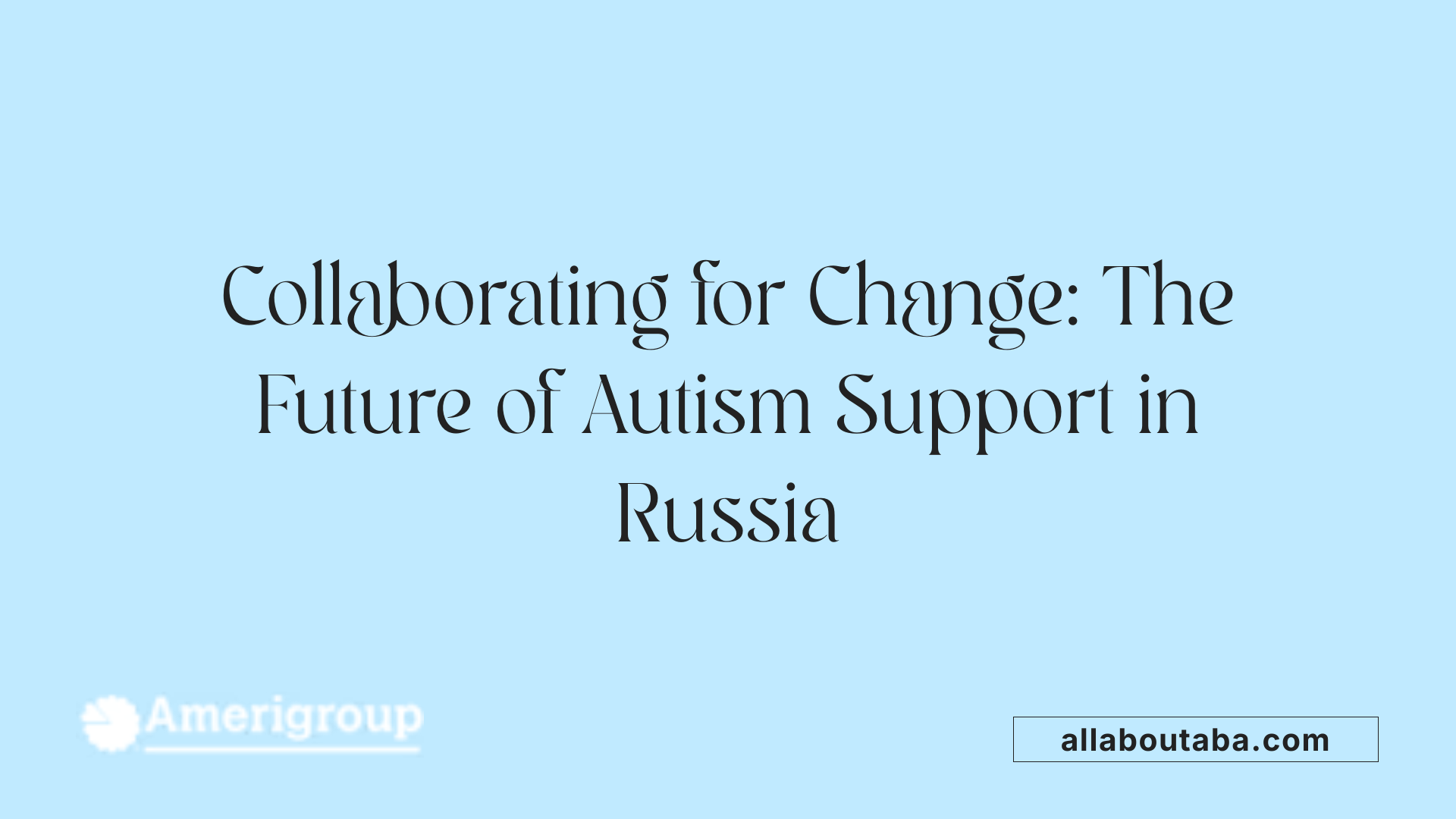
How do collaborations among organizations, research institutions, and government bodies influence autism-related initiatives in Russia?
In Russia, the synergy among various organizations, research institutions, and government agencies plays a pivotal role in advancing autism-related support systems. These partnerships enable the development and implementation of evidence-based treatment approaches, ensuring that interventions are grounded in the latest scientific findings.
One notable area of impact is the creation of inclusive educational models. For instance, the organization behind these initiatives has pioneered programs introducing inclusive practices into Russian schools for the first time. These models help facilitate the integration of children with autism into mainstream classrooms, promoting social inclusion and better educational outcomes.
Furthermore, collaborations are instrumental in shaping national policies and regulations. Over the past decade, joint efforts have influenced more than 800 laws and regulations at the federal and regional levels concerning education and social support for individuals with ASD. Such legal frameworks lay the foundation for systemic change, ensuring that support services are standardized and accessible.
International conferences, like the annual 'Autism. Challenges and Solutions' gathering, exemplify the importance of global cooperation. These events bring together Russian professionals with international experts, fostering exchange of knowledge and best practices that can be adapted to the Russian context.
Research initiatives also benefit from these partnerships, leading to improved diagnostic and screening protocols. A recent study analyzing data from 2020–2021 highlights significant regional disparities in ASD diagnosis rates across Russia. The findings point to the need for enhanced screening processes, better training of pediatric professionals, and increased awareness campaigns.
Organizations involved in advocacy and family support, such as civil society groups, work alongside government bodies to elevate public understanding and reduce stigma surrounding autism. Their efforts include educational programs for health and social care providers, aiming to improve early diagnosis and intervention.
Overall, the collaboration among these diverse entities fosters innovation, broadens support networks, and drives policy reforms. Initiatives like the 'Inclusion 1465' project and the implementation of resource zones within schools exemplify the tangible outcomes of these partnerships.
Despite progress, challenges remain due to regional disparities and underdiagnosis. Nevertheless, ongoing cooperation aims to bridge these gaps, building a more inclusive and supportive environment for individuals with ASD across Russia.
The future of autism support in Russia hinges on strengthening these collaborative efforts. By uniting policy makers, researchers, educators, and families, Russia can continue to develop a comprehensive, evidence-based framework that meets the diverse needs of its autism community.
| Aspect | Impact | Additional Notes |
|---|---|---|
| Policy Development | Over 800 laws influenced | Guides social and educational support |
| Educational Inclusion | First models implemented | Promotes mainstream schooling |
| Professional Training | Extensive educational programs | Improves diagnosis and care |
| Family and Advocacy Efforts | Increased support and awareness | Reduces stigma and promotes acceptance |
| International Engagement | Conferences and knowledge exchange | Introduces global best practices |
| Regional Disparities | Varied diagnosis rates | Highlights need for uniform screening |
| Research & Data | Analysis of recent studies | Guides future interventions |
Understanding the collaboration landscape in Russia underscores its vital role in shaping a more inclusive future for individuals with autism. The ongoing efforts aim to foster a supportive infrastructure capable of early diagnosis, effective intervention, and full societal inclusion.
Looking Forward: Building an Inclusive Future
While Russia has made notable strides in understanding, diagnosing, and supporting autistic individuals through dedicated organizations, policy reforms, and inclusive initiatives, systemic and regional challenges persist. Addressing underdiagnosis, societal misconceptions, and social exclusion requires continued commitment, nationwide cooperation, and increased awareness. Effective collaboration among government, civil society, and international partners holds promise for creating a more inclusive society where autistic individuals are recognized, supported, and-enabled to fully participate. The future of autism support in Russia hinges on ongoing reforms, education, and a collective effort to bridge existing gaps and uphold the rights of all individuals with ASD.
References
- Autism Challenge Center - Центр проблем аутизма
- The Prevalence of Autism Spectrum Disorders in the Russian ...
- Autism in Russia: A Contradictory Field of Diagnostics and Statistics
- Autism Challenge Center - Центр проблем аутизма
- The Prevalence of Autism Spectrum Disorders in the Russian ...
- Resources for people with autism in Russia - The BEARR Trust
- Autism in Russia: A Contradictory Field of Diagnostics and Statistics
- The Prevalence of Autism Spectrum Disorders in the Russian ...
- The Prevalence of Autism Spectrum Disorders in the Russian ...
- [PDF] The Prevalence of Autism Spectrum Disorders in the Russian ...
Other articles
Recent articles

How Schools Can Support Autistic Students In Career Prep

Best Strategies For Autism-Friendly Event Planning

Understanding Noncontingent Reinforcement In Autism Behavior Plans

How Drama Therapy Benefits Autistic Individuals

Best Practices For Autism-Friendly Fitness And Recreation Centers

Best Ways To Promote Healthy Social Media Use For Autistic Teens

How To Help Autistic Children Cope With Public Speaking

Autism And Strategies For Managing Unexpected Changes

Best Podcasts About Autism For Parents And Educators

Autism And The Impact Of Seasonal Changes On Behavior

The Role Of Diet In Managing Co-Occurring Conditions With Autism

Sleep Challenges In Autism And Practical Solutions

Best Ways To Build Daily Routines For Autistic Children

Best Practices For Supporting Autistic Entrepreneurs

Autism And Strategies For Navigating Large Social Gatherings

Adaptive Sports And Recreational Activities For People With Autism

Autism And The Benefits Of Story-Based Learning Activities

Understanding The Role Of Play In Autism Development

Autism And The Impact Of Environmental Noise On Learning

How To Create Autism-Friendly Community Spaces

Autism And Chronic Health Conditions: What To Know

The Role Of Care Managers In Autism Life Planning

How To Teach Social Boundaries To Autistic Children

How Autistic Individuals Experience Empathy Differently

How To Support Autistic Employees In Remote Work Settings

Autism And The Relationship Between Motor Skills And Learning

How To Create Community Resource Guides For Autism Families

How To Teach Daily Living Skills To Autistic Teens

Autism And The Impact Of Mind-Body Practices On Stress Reduction

Autism And The Benefits Of Outdoor Group Activities

How To Create Autism-Friendly Sensory Paths In Schools

Best Practices For Autism-Friendly Park And Recreation Areas

Autism And Strategies For Reducing School Refusal

Supporting Autistic Individuals In Public Speaking

The Role Of Diet In Managing Autism Symptoms

The Benefits Of Gardening Clubs For Autism Social Development

How To Prepare Autistic Children For Dental Visits

Autism And Employment: Career Paths That Work

Best Practices For Autism-Friendly Hotels And Lodging

The Impact Of Screen Time On Autism Development

Autism Screening Tools For Early Childhood

The Role Of Physical Exercise In Autism Therapy

Best Strategies For Supporting Autistic College Students

The Role Of Technology In Autism Early Detection

Sensory-Friendly Classroom Design Ideas For Autistic Students

The Role Of Speech Therapy In Building Social Communication Skills

Best Strategies For Handling Autistic Burnout In Adults

Autism And The Importance Of Predictability In Routine

Autism And Peer Education: Teaching Acceptance In Schools

Best Practices For Sensory-Friendly Libraries And Reading Rooms

Self-Advocacy Skills For Autistic Adults

The Role Of Technology In Autism Peer Communication

Promoting Physical Activity In Children With Autism

How To Prepare Autistic Children For Medical Procedures

The Role Of Social Media In Autism Advocacy And Awareness

The Impact Of Sensory Rooms In Public Facilities For Autism

How To Create An Autism-Friendly Holiday Celebration

Best Practices For Inclusive Education For Autistic Students

Autism And Mental Health: Recognizing Signs Of Distress

Best Practices For Sensory-Friendly Waiting Rooms

The Role Of Teachers In Early Autism Red Flag Identification

Autism-Friendly Housing Design Features

Autism-Friendly Housing Design Features

How Environmental Modifications Improve Autism Outcomes

Autism And Technology-Based Learning Tools

Supporting Autistic Children Through Changes In Routine

The Link Between Autism And Working Memory Challenges

Best Practices For Autism-Friendly Cooking Classes

Autism And The Benefits Of Structured Music Lessons

Best Books To Teach Kids About Autism Acceptance

Sensory Diets And Their Benefits For Autism Management

How To Prepare Autistic Teens For Driver’s Education

How To Teach Autistic Teens About Healthy Relationships

The Role Of Visual Prompts In Building Daily Habits For Autism

Addressing Sleep Regression In Children With Autism

Understanding Social Stories And How They Help Autistic Children

Navigating Insurance Coverage For Autism Therapy Services

How To Prepare Autistic Adults For Independent Travel

Supporting Autistic Individuals In Volunteer Work

How Mindfulness Practices Can Support Autism Well-Being

Understanding Hyperfocus And Special Interests In Autism

Understanding Stimming As A Self-Regulation Tool

Sensory-Based Interventions For Autism At Home

Best Ways To Introduce Self-Advocacy In Autistic Teens

Best Ways To Support Autistic Employees In Customer Service Roles

Best Practices For Autism-Friendly Volunteer Programs

Autism And The Benefits Of Sensory Play For Emotional Growth

Autism And Strategies For Building Peer Relationships

Understanding How Autism Affects Memory Processing

Autism And Strategies For Building Coping Skills In Teens

The Role Of Parent Training In Autism Intervention Programs

Autism-Friendly Workplace Accommodations

Using Visual Timers For Autism Time Management

What Is ABA Therapy?

Autism and Sleep

Do Plastic Toys Cause Autism?

Autism Facial Expressions

Autism and Motor Skills

Which Parent Carries The Autism Gene?

Autism Symbols & Colors
We’re All About You, Your Family, and Your Child

